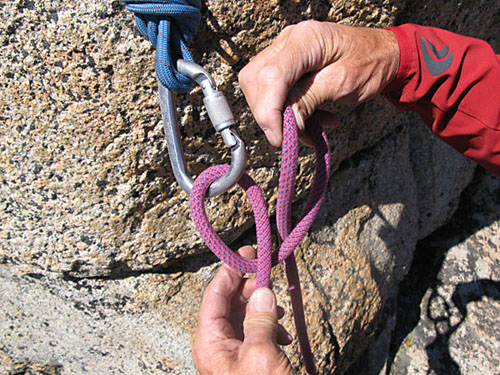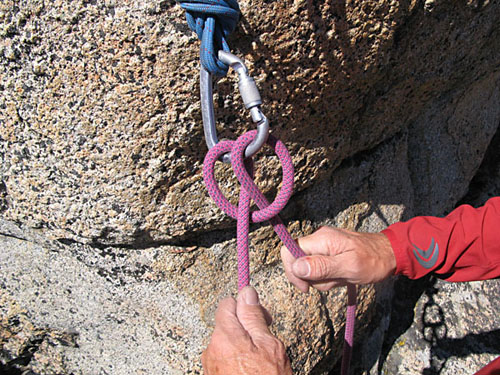TECH TIP: Get Hitched! - Münter/Clove Hitch Part 1
Tieing in with a Clove Hitch
By: Bela G. Vadasz
On a multi-pitch route, we used to tie-in to the belay anchor with a figure eight on a bite. It's a very secure knot but it is difficult to estimate the final length of the rope to be tensioned against the anchor. Lengthening or shortening the tie-in by adjusting the figure eight is hit or miss and much too time consuming.
Another method some climbers use is carrying an additional piece of gear called a daisy chain. It is a sewn nylon sling with bar-tack stitched loops, allowing the climber to choose the correct length by clipping into the appropriate loop. Daisy chains were originally introduced for direct aid and big wall climbing and seem less efficient for free-climbing routes as it requires additional gear to carry and manage and seems unnecessary.
The best internationally accepted method is for the climber arriving at the belay stance to use his or her climbing rope and tie directly into the master point of the anchor with a clove hitch. It takes a little practice to learn to tie the knot, but once you learn it, you'll love it!
It's quick and easy to tie but more importantly, it's super easy to adjust the length between you and your harness so you can get comfortable for belaying your partner.



Here are a few important qualifiers when using the clove hitch as a master point tie in:
- Use a pear-shaped, screwgate locking carabiner.
- Pre-tighten the hitch by pulling both strands before you load the hitch with your weight.
If you have doubts about the security of the hitch, you can always take a bite of rope past the hitch and tie an overhand or figure eight on a bite and clip it into the anchor as a backup. In a short time you'll gain confidence in the clove hitch and drop the backup.
Practice with a clove hitch and it opens the door to a variety of useful options.
See Part 2 >

Caution: It is recommended to practice these techniques under the coaching and supervision of a qualified instructor. ASI makes no guarantees regarding the use of techniques illustrated or recommended on this website with regard to insuring personal safety or preventing injury or death.
|